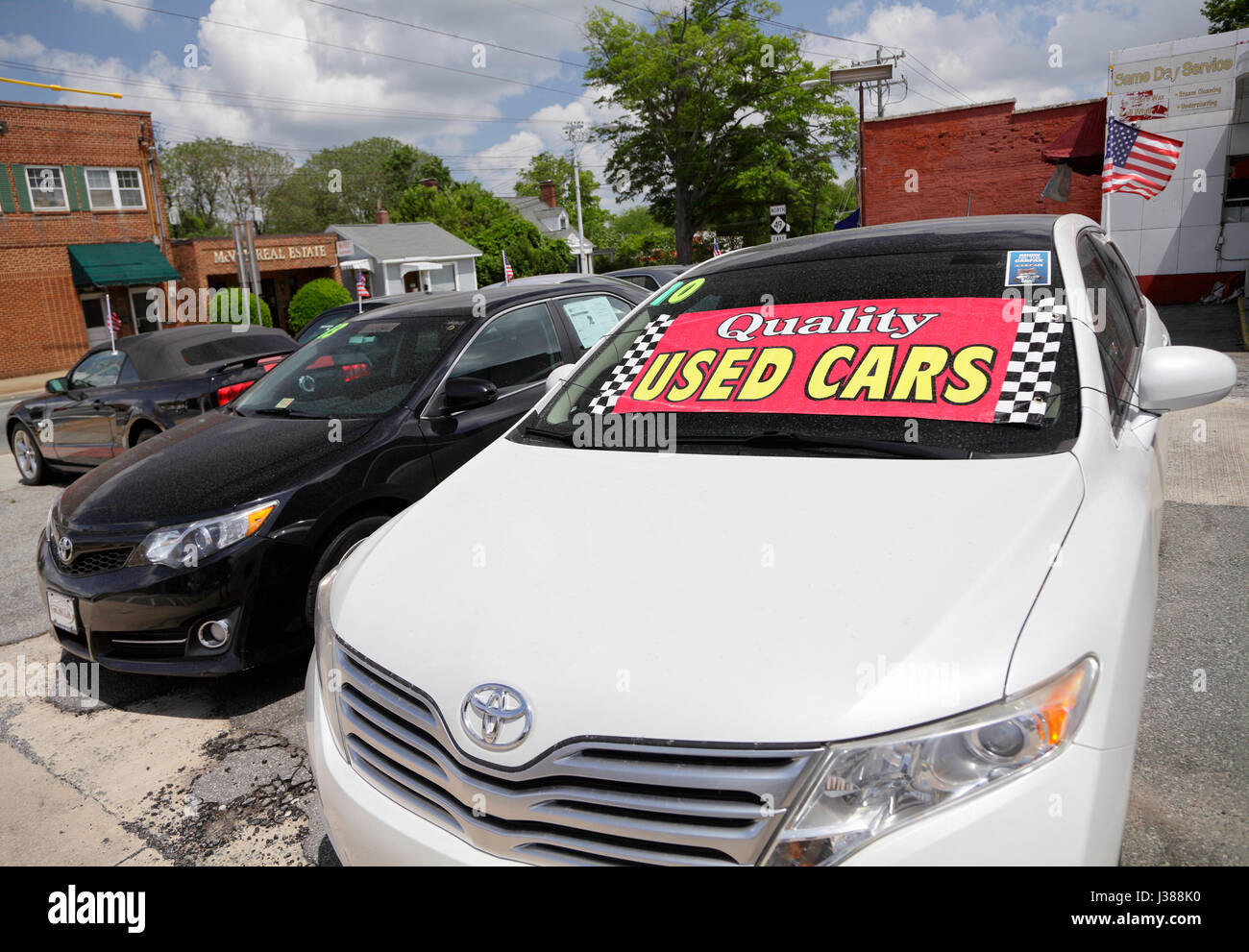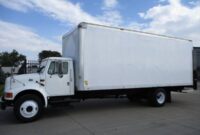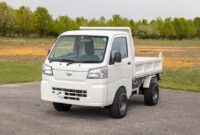Used Pickup Trucks 4×4: Your Comprehensive Guide to Off-Road Capability and Unbeatable Value pickup.truckstrend.com
The allure of a pickup truck is undeniable, offering a unique blend of utility, power, and freedom. When you add 4×4 capability to the mix, that appeal intensifies, transforming a versatile workhorse into an all-terrain adventurer. However, purchasing a brand-new 4×4 pickup can be a significant financial undertaking. This is where the world of used pickup trucks 4×4 truly shines, offering an accessible entry point to robust capability without the hefty depreciation of a new vehicle.
Used 4×4 pickups represent a smart investment for a wide range of buyers: the weekend warrior looking to explore uncharted trails, the contractor needing reliable transport to challenging job sites, the outdoor enthusiast towing a boat or camper, or simply anyone who appreciates the security of navigating adverse weather conditions with confidence. They offer a compelling combination of proven durability, established aftermarket support, and significant cost savings. This comprehensive guide will delve into everything you need to know about navigating the used 4×4 pickup market, ensuring you make an informed decision that perfectly matches your needs and budget.
Used Pickup Trucks 4×4: Your Comprehensive Guide to Off-Road Capability and Unbeatable Value
Why Choose a Used 4×4 Pickup? Unpacking the Value Proposition
Opting for a used 4×4 pickup truck isn’t just about saving money upfront; it’s about making a financially astute decision that offers several advantages over buying new:
- Significant Cost Savings: The most obvious benefit is the reduced purchase price. New vehicles depreciate rapidly in their first few years, meaning a used truck that’s just a few years old can be thousands of dollars cheaper than its new counterpart, despite offering comparable performance and features.
- Slower Depreciation: Since the initial steep depreciation has already occurred, your used 4×4 truck will hold its value better over time compared to a new one, making it a smarter long-term investment.
- Proven Reliability: Many popular 4×4 truck models have long-standing reputations for durability. By researching specific models and years, you can identify vehicles with known reliability, allowing you to benefit from a truck that’s already proven its mettle.
- Established Aftermarket: The used truck market benefits from a vast and mature aftermarket industry. This means easier access to replacement parts, a wider range of accessories for customization (lifts, bumpers, winches), and a community of owners and mechanics with expertise.
- Less Worry About Dings and Scratches: A used truck already has some character. This can translate to less stress about the inevitable minor dents or scratches that come with using a pickup for its intended purpose, whether it’s hauling lumber or tackling a rocky trail.

Understanding 4×4 Systems: Part-Time, Full-Time, and Automatic
Before you buy, it’s crucial to understand the different types of 4×4 systems commonly found in pickup trucks, as they dictate how and where you can engage four-wheel drive:

- Part-Time 4×4: This is the most common system. It offers 2-High (2H), 4-High (4H), and 4-Low (4L) settings. In 2H, power goes only to the rear wheels. 4H and 4L lock the front and rear driveshafts together, providing maximum traction. Crucially, part-time 4×4 should not be used on dry, paved surfaces as it can cause drivetrain binding and damage due to the lack of a center differential. It’s ideal for slippery conditions like mud, snow, sand, or off-road trails.
- Full-Time 4×4: Found on some higher-trim or heavy-duty models, full-time 4×4 includes a center differential, allowing the front and rear wheels to rotate at different speeds. This means it can be used on any surface, including dry pavement, without damaging the drivetrain. It often still includes 4H and 4L settings for more extreme off-road use.
- Automatic (Auto) 4×4: This system typically operates in 2WD mode but automatically engages 4WD when the vehicle detects wheel slip. It offers the convenience of "set it and forget it" for varying road conditions (e.g., patchy snow and dry pavement). Some systems also offer manual 4H and 4L settings.

Knowing the type of 4×4 system in your potential truck is vital for proper operation, maintenance, and avoiding costly repairs.
Key Considerations Before Buying: A Pre-Purchase Checklist
Purchasing a used 4×4 pickup requires diligent research and inspection. Use this checklist to guide your buying process:
-
Define Your Needs and Budget:
- Intended Use: Will it be a daily driver, heavy hauler, serious off-roader, or a combination? This dictates truck size (half-ton, three-quarter-ton, one-ton), engine type (gas, diesel), cab configuration (regular, extended, crew cab), and bed length.
- Budget: Beyond the purchase price, factor in insurance, fuel economy (4x4s are often thirstier), potential repairs, and any desired aftermarket modifications.
-
Thorough Condition Assessment:
- Rust: This is the arch-nemesis of older trucks, especially in regions that use road salt. Inspect the frame meticulously – look for flaking, holes, or extensive surface rust. Also check fender wells, rocker panels, and bed supports.
- Drivetrain: Check for leaks around the engine, transmission, transfer case, and differentials. Listen for unusual noises during the test drive (clunks, grinding, whining). Ensure the 4×4 system engages smoothly in all settings.
- Suspension: Look for sagging, uneven stance, or broken components. Test shocks by pressing down on each corner of the truck – it should rebound once or twice, not bounce excessively.
- Tires: Check tread depth and ensure all tires are the same brand and size, indicating proper rotation and maintenance.
- Brakes: Check for pulsing, squealing, or pulling during the test drive.
- Electricals: Test all lights, windows, locks, infotainment system, and HVAC.
- Interior: Assess wear and tear, paying attention to seat condition, dashboard cracks, and unusual odors.
-
Maintenance History and Documentation: Request service records. A well-documented history of oil changes, fluid flushes, and repairs is a strong indicator of a well-cared-for vehicle.
-
Mileage vs. Age: Don’t be solely deterred by high mileage if the truck has a solid maintenance history. A truck with 150,000 highway miles might be in better shape than one with 80,000 hard off-road miles.
-
VIN Check: Run a Vehicle Identification Number (VIN) report (e.g., CarFax, AutoCheck). This can reveal accidents, flood damage, salvage titles, odometer discrepancies, and previous ownership details. Avoid trucks with salvage or rebuilt titles unless you are an expert mechanic and understand the risks.
-
Test Drive: Take the truck on various road surfaces, including highway speeds, city driving, and, if possible, engage the 4×4 in a safe, appropriate area (like a gravel lot, not dry pavement for part-time 4×4). Listen for unusual noises, feel for vibrations, and assess steering, braking, and acceleration.
-
Professional Pre-Purchase Inspection (PPI): This is arguably the most crucial step. Hire an independent mechanic specializing in trucks to conduct a thorough inspection. They can identify issues you might miss, potentially saving you thousands in future repairs.
Popular Models and What to Look For
While specific recommendations vary by year and generation, here are some perennially popular used 4×4 pickup truck models and what generally to consider:
- Ford F-150 / F-250 / F-350: America’s best-selling truck for decades.
- F-150: Great all-arounders. Look for 5.0L V8 or EcoBoost V6 engines. Watch for cam phaser issues on some older V8s and potential timing chain issues on early EcoBoosts, though many have been resolved.
- F-250/F-350: Heavy-duty workhorses. The 7.3L Power Stroke diesel (older models) is legendary for reliability. Newer 6.7L Power Stroke diesels are powerful but can have higher maintenance costs. Gas V8s (6.2L, 7.3L Godzilla) are solid choices.
- Ram 1500 / 2500 / 3500: Known for comfortable rides (especially with coil springs on 1500s) and powerful engines.
- 1500: The 5.7L Hemi V8 is popular. Check for exhaust manifold leaks and potential lifter issues on higher mileage Hemis.
- 2500/3500: The Cummins diesel engine is highly sought after for its immense torque and durability, but check for proper maintenance of the emissions systems on newer models.
- Chevrolet Silverado / GMC Sierra 1500 / 2500 / 3500: Robust and reliable, especially models with the tried-and-true GM LS-series V8 engines.
- 1500: 5.3L V8 is a workhorse, but watch for Active Fuel Management (AFM)/Dynamic Fuel Management (DFM) issues on some years, leading to oil consumption.
- 2500/3500: The Duramax diesel paired with the Allison transmission is a powerhouse. Check for injector issues on older models and emissions system problems on newer ones.
- Toyota Tacoma / Tundra: Renowned for their exceptional reliability and high resale value.
- Tacoma: A popular mid-size truck. Earlier 4.0L V6s are incredibly durable. Watch for frame rust on older generations. TRD Off-Road and Pro models hold their value exceptionally well.
- Tundra: A full-size contender. The 5.7L V8 is a strong, reliable engine. While not as luxurious as some competitors, their dependability is unmatched.
- Nissan Frontier / Titan: Often offer good value for money compared to their competitors.
- Frontier: A capable mid-size option. The 4.0L V6 is generally reliable.
- Titan: Full-size option. The 5.6L V8 is a solid performer.
Tips for a Successful Purchase and Ownership
- Where to Buy:
- Dealerships: May offer certified pre-owned (CPO) options with warranties, but often higher prices.
- Private Sellers: Potentially lower prices, but more due diligence is required on your part.
- Auctions: Can yield great deals, but "buyer beware" is critical as inspections are limited.
- Negotiation: Research market values for comparable trucks in your area. Be prepared to walk away if the deal isn’t right.
- Post-Purchase Maintenance: Even with a clean inspection, consider changing all fluids (engine oil, transmission fluid, differential fluid, transfer case fluid), filters, and spark plugs as a baseline.
- Smart Modifications: Prioritize practical upgrades like quality all-terrain tires, a modest lift (if needed for clearance), and perhaps a winch for serious off-roading. Avoid heavily modified trucks unless you know the quality of the work.
- Regular Maintenance: Adhere to the manufacturer’s recommended service intervals. Pay special attention to 4×4 system components, especially if you frequently use them. Regular fluid changes for the differentials and transfer case are crucial.
Challenges and Solutions
- Rust:
- Challenge: Can compromise structural integrity and make repairs difficult.
- Solution: Thorough pre-purchase inspection. If buying, consider rustproofing treatments (fluid film, undercoating) and regular washing, especially after driving in salty conditions.
- Undisclosed Damage:
- Challenge: Previous accidents or flood damage not disclosed by the seller.
- Solution: Mandatory VIN check and a professional pre-purchase inspection.
- Poor Fuel Economy:
- Challenge: 4×4 pickups, especially older ones, can be thirsty.
- Solution: It’s an inherent characteristic, but proper maintenance (tuned engine, correct tire pressure) can optimize efficiency. Consider if a smaller engine or truck size better suits your needs.
- High Insurance Costs:
- Challenge: Larger, more powerful vehicles often have higher insurance premiums.
- Solution: Get insurance quotes before purchasing to factor into your budget.
- Finding Parts for Older Models:
- Challenge: Obsolete parts for very old or less common models.
- Solution: Online communities, specialty junkyards, and aftermarket manufacturers often support older platforms.
Used Pickup Trucks 4×4: Estimated Price Table
Prices for used 4×4 pickup trucks vary immensely based on make, model, year, mileage, condition, trim level, engine, and geographical location. This table provides general estimated ranges for popular models, assuming good to excellent condition for their age. Always research current market values for specific vehicles.
| Make/Model | Typical Model Years | Estimated Price Range (USD) | Key Considerations |
|---|---|---|---|
| Mid-Size Trucks | |||
| Toyota Tacoma (V6 4×4) | 2010-2015 | $15,000 – $25,000 | Legendary reliability, high resale; check for frame rust on older models. |
| Toyota Tacoma (V6 4×4) | 2016-2020 | $25,000 – $38,000 | Strong demand, excellent off-road trims (TRD); watch for early 3.5L V6 quirks. |
| Nissan Frontier (V6 4×4) | 2010-2015 | $10,000 – $18,000 | Good value, capable; often more affordable than Tacoma. |
| Chevrolet Colorado/GMC Canyon (V6 4×4) | 2015-2020 | $18,000 – $30,000 | Modern features, comfortable ride; good diesel option available. |
| Full-Size Light-Duty | |||
| Ford F-150 (V8/EcoBoost 4×4) | 2010-2014 | $12,000 – $22,000 | Wide availability, diverse engine options; check for common engine issues (e.g., cam phasers). |
| Ford F-150 (V8/EcoBoost 4×4) | 2015-2020 | $20,000 – $40,000 | Aluminum body, advanced tech; excellent towing and payload. |
| Ram 1500 (Hemi 4×4) | 2010-2014 | $10,000 – $20,000 | Coil spring suspension offers smooth ride; check for exhaust manifold/lifter issues. |
| Ram 1500 (Hemi 4×4) | 2015-2020 | $18,000 – $38,000 | Refined interior, powerful Hemi; good infotainment. |
| Chevy Silverado/GMC Sierra 1500 (V8 4×4) | 2010-2014 | $12,000 – $22,000 | Robust powertrains, strong work trucks; look for AFM/DFM issues on some V8s. |
| Chevy Silverado/GMC Sierra 1500 (V8 4×4) | 2015-2020 | $20,000 – $40,000 | Comfortable, reliable, good for towing. |
| Toyota Tundra (V8 4×4) | 2010-2014 | $18,000 – $28,000 | Exceptional reliability, strong 5.7L V8; high resale value. |
| Toyota Tundra (V8 4×4) | 2015-2020 | $25,000 – $45,000 | Minimal changes but proven platform; great long-term investment. |
| Heavy-Duty Trucks | |||
| Ford F-250/F-350 (Gas/Diesel 4×4) | 2010-2015 | $18,000 – $35,000 | Serious towing/hauling; 6.7L Power Stroke diesel is powerful; gas options available. |
| Ram 2500/3500 (Cummins/Hemi 4×4) | 2010-2015 | $18,000 – $38,000 | Legendary Cummins diesel (check emissions systems); comfortable ride. |
| Chevy Silverado/GMC Sierra 2500/3500 (Duramax/Gas 4×4) | 2010-2015 | $18,000 – $35,000 | Duramax/Allison combo is a powerhouse; check for injector/emissions issues on diesels. |
Frequently Asked Questions (FAQ)
Q1: Is a used 4×4 truck reliable?
A1: Yes, absolutely, if it has been well-maintained and properly inspected. Many 4×4 trucks are built to be durable workhorses. A thorough pre-purchase inspection and reviewing maintenance records are key to finding a reliable used truck.
Q2: What’s the "best" mileage for a used 4×4 truck?
A2: There’s no single "best" mileage. A truck with 150,000 highway miles and excellent maintenance records can be a better buy than one with 80,000 hard off-road miles and no service history. Focus on the truck’s overall condition, maintenance history, and how it was used, rather than just the odometer reading.
Q3: Can I use 4×4 on dry pavement?
A3: Generally, no, if it’s a part-time 4×4 system. Engaging part-time 4×4 on dry, hard surfaces can cause "drivetrain binding" and lead to expensive damage. Only full-time or automatic 4×4 systems can be used on dry pavement. Always refer to the owner’s manual for specific guidelines.
Q4: How much should I budget for potential repairs on a used 4×4 truck?
A4: It’s always wise to set aside an emergency fund, typically 10-15% of the purchase price, for unexpected repairs in the first year. Maintenance costs for larger trucks, especially diesels, can be higher than for passenger cars.
Q5: Is a pre-purchase inspection (PPI) really necessary?
A5: Highly recommended, yes. A PPI by an independent, trusted mechanic can uncover hidden issues, negotiate a better price, or help you avoid a money pit. It’s a small investment that can save you thousands.
Q6: What’s the difference between 4WD and AWD?
A6: "4WD" (Four-Wheel Drive) typically refers to systems with selectable modes (2H, 4H, 4L), often found in trucks and serious off-road vehicles. "AWD" (All-Wheel Drive) is usually fully automatic, always sending power to all four wheels as needed, and is more common in SUVs and cars for improved on-road traction.
Conclusion
A used 4×4 pickup truck offers an incredible blend of capability, versatility, and value. By understanding the different 4×4 systems, meticulously inspecting potential candidates, and performing diligent research, you can confidently navigate the market and find a vehicle that perfectly fits your adventurous spirit and practical needs. While the journey to finding the right truck requires patience and a keen eye, the rewards — from conquering challenging terrain to confidently towing your biggest toys — are well worth the effort. Embrace the open road, and the trail less traveled, with your capable and reliable used 4×4 pickup truck.



